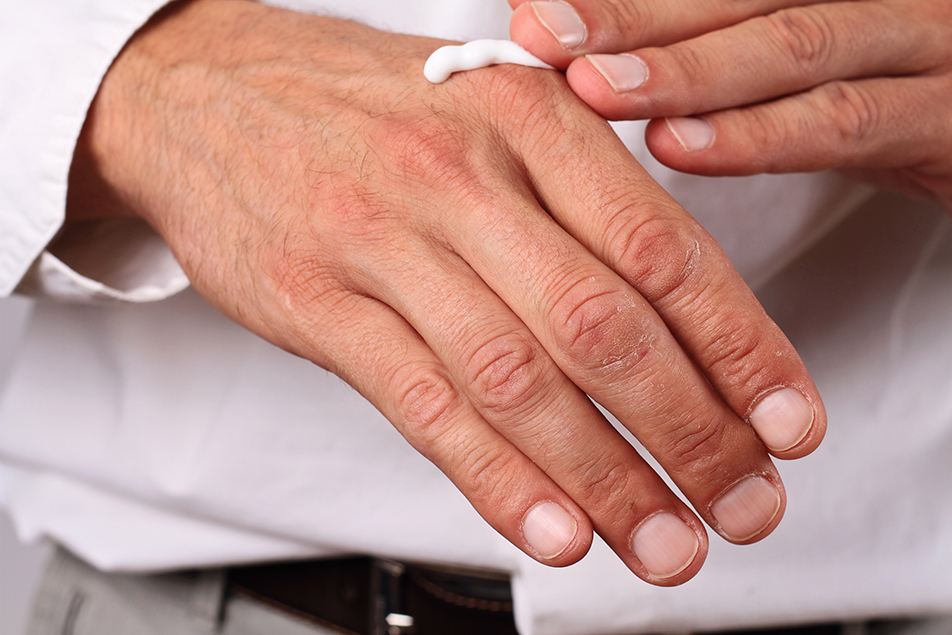
This post was written by Dara Spearman, MD, FAAD, medical director, PPG – Dermatology, Parkview Physicians Group and chair for the Skin Tumor Site Team, Parkview Cancer Institute.
With the threat of COVID-19 still present, we are all doing our part to protect ourselves and our loved ones. Proper hand washing is a key weapon in fighting the spread of this virus and protecting those most vulnerable from infection. In accordance with Center for Disease Control and Prevention (CDC) guidelines, 20 seconds of hand washing with soap and water is required to effectively remove pathogens. Armed with these recommendations, hand hygiene habits are changing, and people are washing their hands more frequently than ever before. In fact, healthcare workers may wash their hands up to 100 times during a shift. While there’s no arguing that this is a reliable way to prevent transmission of coronavirus, frequent scrubbing of hands can exacerbate dry skin problems. Between the frequent hand washing and the lingering cold weather (snow in April!), how can we protect our skin?
The downside of scrubbing
Soap and water rinse away dirt and germs, but they also strip our skin of our natural, protective oils, causing our skin to become dry and cracked. Irritation from the alcohol, soap and rubbing causes little cracks in the skin which increases the risks of contracting infections like staph or causing eczema. Cold, dry air has similar effects on skin and exacerbates the effects of frequent hand washing.
Prevention and protection
How can we prevent these complications while keeping ourselves safe? First, using an alcohol-based hand sanitizer can be less irritating than repeated washing. These products should contain at least 60% alcohol. It is important to note that although effective at removing pathogens, these products are less effective for removing visible dirt, grime or harsh chemicals. Using these as an alternative to soap and water, when it makes sense, like after touching a door handle, can help to prevent significant irritation. However, per CDC recommendations, these are not recommended when visible dirt or grease are present.
Use of a fragrance-free soap when washing can also help prevent irritation. Promptly applying an emollient after hand washing can help replace the protectant oils we are stripping from our hands when washing with soap and water. After washing for 20 seconds, pat (do not rub) hands leaving them a little damp. Immediately apply a cream (I like Norwegian Formula® hand cream by Neutrogena or Gloves in a Bottle) to the skin. Hand creams (in a tube or jar) are better than body lotions (in a bottle) because they are more nourishing and adhere to the skin longer.
Sensitive skin considerations
Those who already have a history of hand eczema or sensitive skin should take steps to prevent flare ups of their condition. A humidifier improves the moisture in the air as well as in the skin. If the skin should develop fissures, liquid bandage can be applied to the cracks to prevent repeated re-opening. Avoid contact with heavy cleaners or even disinfecting wipes, and use gloves to prevent exposure to these and other harsh chemicals.
Use of a heavier ointment, such as Vaseline® or Aquaphor® after hand washing may be helpful for sensitive skin. These can also be used in the evening when you can give your hands a rest. Cotton gloves over the ointment will help seal in the moisture. Finally, a visit to the dermatologist (we are even doing video visits to help flatten the curve) may be needed for prescription therapy.